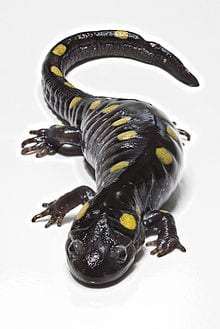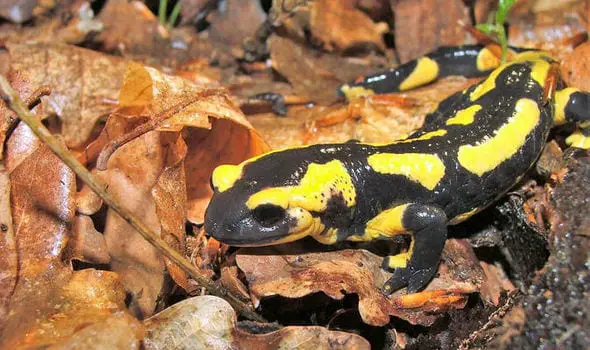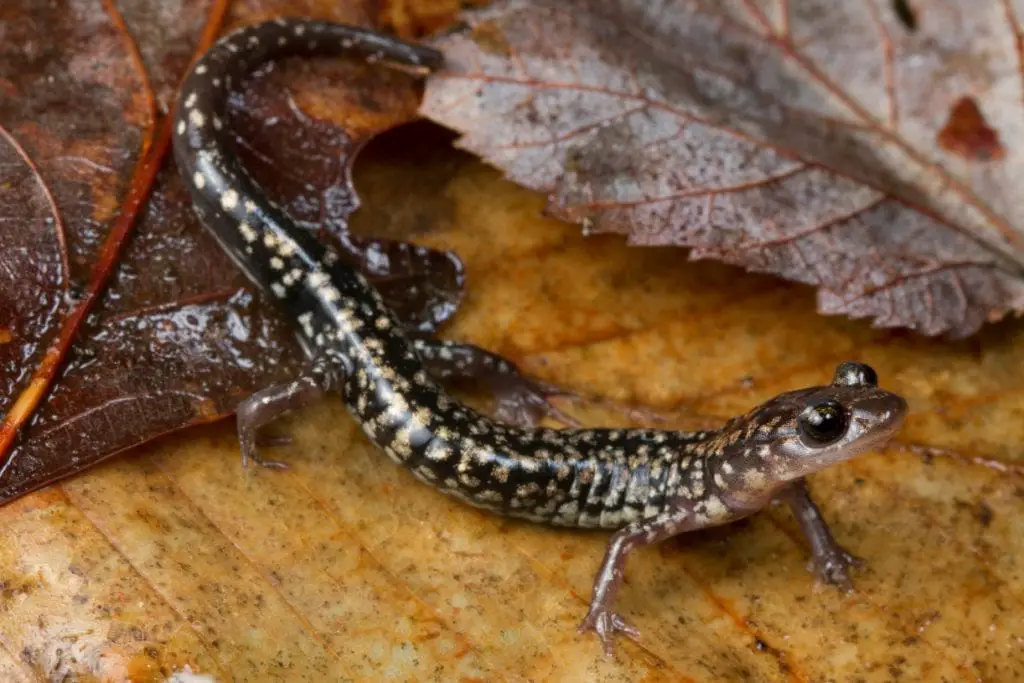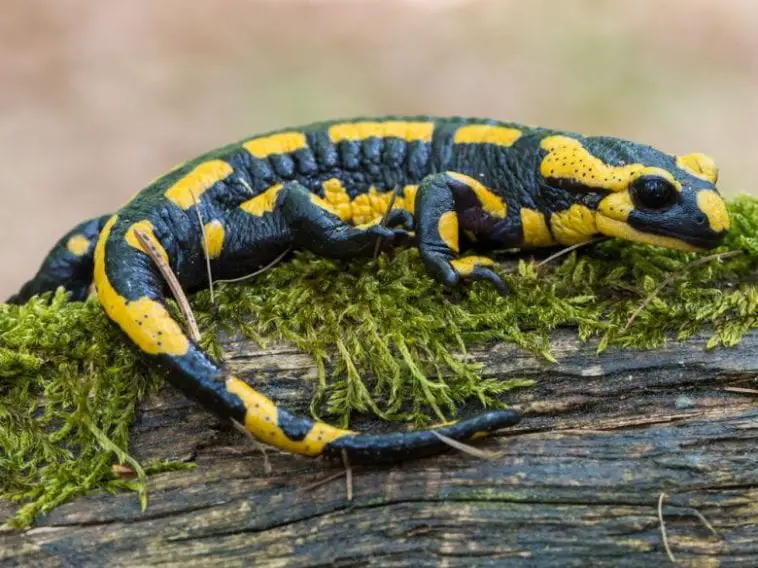There are more than 400 species of salamanders living all around the world. Out of this number, there are 130 to 150 species that are known to residents living in North America. Over 40 percent of these species are facing a high risk of extinction. The greatest diversity of salamanders in the world is found in the South Eastern region of the United States.
Like frogs, salamanders are amphibians, and most need water in order for them to reproduce. Salamanders reside in habitats that differ in types – from moist forests to mountain streams, and swift rivers. In many of their habitats, they are the most abundant vertebrate in their ecosystem.
Currently, there are 11 salamander species are on the federal endangered or threatened species list in the United States, but there many other species that at risk. The main concern for these salamander populations is the loss and changes that their habitat is facing. Salamander habitat is being destroyed, fragmented, and modified. Because of this, the number of salamanders in the United States and their species diversity is at risk. If you want to know more, keep on reading.
What Is A Salamander?
Salamanders belong to the animal class Amphibia, which means that they are related to toads and frogs. They belong to the order Caudata, which means that these animals have a tail. Unfortunately, salamanders are one of the animals that are least studied because of their nocturnal lifestyle and their secretive nature. They reside in wet and dark places, and they are often seen in the deep woods. This is one of the reasons why salamanders are the subjects of many legends and myths.
What Do Salamanders Look Like?

At first glance, most salamanders look like lizards. This is why many people give them the nickname of “spring lizards.” However, salamanders are not reptiles like lizards. They are amphibians. They have moist skin, and unlike lizards, they have no claws, no scales, and no ears. In the United States, salamanders usually range from 2 inches to 2 feet in length. Most Salamanders have two pairs of legs, but some of them look a lot like eels because they usually have reduced or only a single pair of legs.
Salamanders also have tails, which they use for being aquatic creatures. These are often compressed to help them with swimming. There are also terrestrial subspecies, but their tails are more rounded compared to the aquatic ones. A unique fact about these salamanders is that they have the ability to regenerate their tails just in case they are lost. These salamanders also continue to grow and develop even past their sexual maturity, which means that their skin sheds every once in a while. After salamanders shed their skin, they often eat their skin, too.
When these salamanders are out of the water, they have mucus-secreting glands to help their skin from drying out. Their skins also have glands in their bodies that release toxins, which serve as their protection against predators. Additionally, some salamanders have glands to produce some pheromones, which are chemicals that are used for courtship and mating.
Another unique fact about salamanders is that some of them have lungs, but some species do not. For those individuals without lungs, their respiration occurs through their mouths and their skins. For all species of salamanders, respiration through their skin helps a lot during the hibernation process. Just take note that all salamanders must remain in damp environments so that they can keep their skin moist and so you can prevent their skin from drying out.
Most salamanders that are aquatic in nature have gills that they will eventually absorb after metamorphosis as they become adults. But, some salamanders keep their external gills throughout their entire lives. Their gills are red in color because their gills have high blood concentration that is necessary so that they can absorb the oxygen that is found on the water. Depending on the water quality in their surroundings, the size of the gills in the salamanders can change. In warm, slow-moving, low-oxygen waters, salamanders often have larger gills than those ones who are in high-oxygen waters.
Threats Against Salamanders

Because salamanders are very secretive and there are very few facts known about them, scientists could never be sure of the extent of the decline of this species populations. The only statistics are over 40 percent of North American salamander species are at risk against extinction.
The most common threats to the population of salamanders are water pollution and habitat loss. Sometimes, the other reasons are an over-collection of species for the pet trade, acid rain, bait sales, drought, drainage of wetlands, stocking fish in breeding ponds, and the creation of dams.
Another major contributor to the reduction of terrestrial and aquatic salamander habitats is growing urban development. It involves converting the wetlands and the woodlands into strip malls, parking lots, and commercial areas. Even if there are small areas of salamander habitats that get preserved, their populations can still be doomed for extinction if they are disconnected and are surrounded by roads and other developments. Another thing can reduce the abundance of salamanders is forest cutting and forest thinning for fire control.
Habitat Destruction of Salamanders

One of the main issues surrounding salamanders is losing their natural habitat. Many areas that were perfect for the needs of salamanders have been ruined and damaged because of agriculture and developmental construction programs. Unfortunately, these habitats are now being lost at an alarmingly quick rate. If you look at it, wetlands are being drained, forests are cut down and logged, and the waterfronts are developed. Salamanders are losing their homes, and they are losing these very rapidly!
Deforestation is being particularly harmful to salamanders. Sometimes, the amount of shade covering the forest floor is reduced because of the removal of trees. Then, the increase in sunlight allows the higher temperatures to reach the floors of the forests. This, therefore, increases the risk of desiccation. This can also dry up the vernal pools and temporarily flooded areas on the forest floor, and these are all crucial breeding sites for salamanders.
In the places where salamander’s natural habitats exist, they are often degraded and fragmented. Fragmentation means that the healthy areas are isolated from one another, and it is also known as the habitat islands. Because of these things, the populations are being prevented because the gene flow between the populations is being affected. This problem increases the chances of inbreeding, which therefore weakens the genetic variability, which will produce offspring that is much weaker and prone to an early death.
The problem with fragmented populations is that this can be called a genetic bottleneck. This is an evolutionary event where the strong and important percentage of the species gets killed off. It can prevent the population from reproducing.
Aside from this, habitat fragmentation is also problematic because it eliminates the important requirements that are critical for the sake of the survival of the salamanders. These crucial locations can be used for over-wintering, prey capture, breeding, and thermoregulation. Without meeting these specific requirements, the salamanders will have to face the dwindling of their population. For instance, the loss of important breeding sites will affect the entire population of salamanders and harm their reproductive output.
Another thing that you can consider is degradation. Degradation occurs when the establishment of natural habitat has become altered and corrupted that it will be unlikely that the remaining species of salamanders would not be unable to survive. Agriculture and urban developments in near fragmented locations can put these salamanders at very serious risk.
As amphibians, salamanders have very absorbent skins. If these skins are exposed to oils, pesticides, industrial contaminants, waterway sedimentation, sewage runoff, toxic substances, and other chemicals, the salamanders are facing the threat of immediate death. If they can be saved from death, the problem is a possible spreading of horrific and terrible deformities.
Additionally, it has been studied by the organization Save the Frogs, the brand of Atrazine, which is the most commonly used herbicide on the planet, can reduce the survivorship of salamanders. This is why salamander keepers must be aware that though some brands claim that they are eco-friendly, they can still bring harm to salamanders. All forms of herbicides and pesticides should be viewed with caution.
Finally, you should always remember that salamanders are amphibians that have a strong connection with water. Even the terrestrial species, even depend on moisture so that they can stay away from desiccation. Unfortunately, there is a problem with the drying of bodies of water, changes in water temperature, stocking of fish in ponds, water contamination, and chemical runoff from urban areas.
Is It Too Late?
It will never be too late to save the world and native salamanders. Better forestry and agricultural practices can help to lessen the harmful risks for the populations of salamanders. This will also limit pollution and destroying their habitat. People should also work with organizations with conservation efforts. If you can, you can work with organizations that work on the restoration of damaged wetland habitat. Small streams need to be protected against development, and natural streamside vegetation should remain intact.



